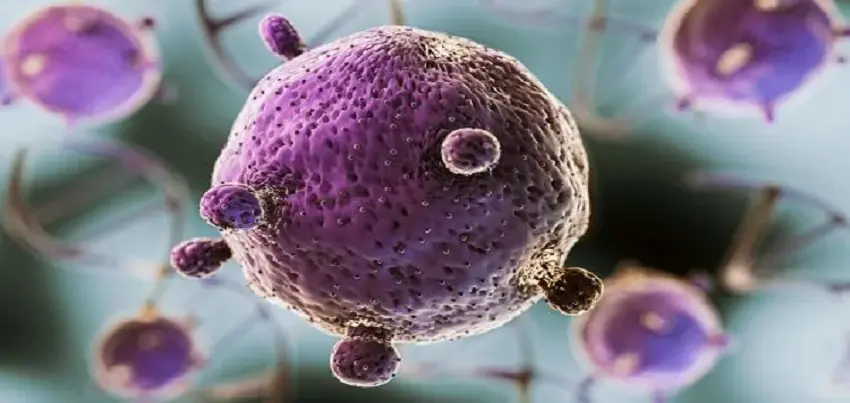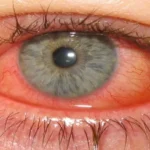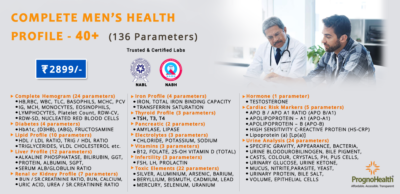PrognoHealth – Corporate Health & Wellness Specialist
Contact Us
+91 9510650660
Email Us
corpsales@prognohealth.com
Contact Us
+91 9510650660
Email Us
corpsales@prognohealth.com
Sarcoma
Sarcoma is a type of cancer that develops in the connective tissues of the body, such as bones, muscles, cartilage, and fat. It is a rare form of cancer, accounting for less than 1% of all cancer cases. Sarcoma can occur in any part of the body, but it is most commonly found in the arms, legs, and torso.
Symptoms of sarcoma can vary depending on the location of the tumor. Common symptoms include:
Pain or swelling in the affected area
Fatigue
Loss of appetite
Weight loss
Difficulty moving the affected limb
A lump or mass that can be felt under the skin
To diagnose sarcoma, a variety of tests may be used, including:
X-ray: to detect bone tumors
CT scan: to create detailed images of the inside of the body
MRI: to create detailed images of the soft tissue tumors
Biopsy: to remove a small sample of tissue from the tumor for examination under a microscope
Common treatment methods for sarcoma include:
Surgery: to remove the tumor and some surrounding healthy tissue
Radiation therapy: to use high-energy radiation to kill cancer cells
Chemotherapy: to use drugs to kill cancer cellsTargeted therapy: touse drugs that target specific proteins in cancer cells
Preventing sarcoma from occurring is difficult, as the exact cause of the disease is unknown. However, there are a few steps that can be taken to reduce the risk of developing sarcoma.
One way to reduce the risk of sarcoma is to undergo annual health check-ups. During these check-ups, a doctor will perform a physical examination and may order additional tests to detect any potential health issues.
Corporate health & wellness programs can also play a role in preventing sarcoma. These programs may include offering employees access to healthy foods, encouraging physical activity, and providing resources for stress management.
Diet and exercise can also be important in preventing sarcoma. Eating a diet that is rich in fruits, vegetables, and whole grains can help to boost the immune system and reduce the risk of cancer. Regular physical activity can also help to reduce the risk of cancer by maintaining a healthy weight and reducing inflammation.
In conclusion, sarcoma is a rare form of cancer that develops in the connective tissues of the body. Symptoms can vary depending on the location of the tumor and can include pain, swelling, and a lump or mass under the skin. Diagnosis of sarcoma is made through a variety of tests, including x-ray, CT scan, MRI, and biopsy. Treatment options include surgery, radiation therapy, chemotherapy, and targeted therapy. While the exact cause of sarcoma is unknown, steps can be taken to reduce the risk of developing the disease, including undergoing annual health check-ups, participating in corporate health & wellness programs and maintaining a healthy diet and regular physical activity.
Blog Categories
Top rated products
-
 Full Body Health Checkup I
Rated 5.00 out of 5
Full Body Health Checkup I
Rated 5.00 out of 5₹3,000.00Original price was: ₹3,000.00.₹1,770.00Current price is: ₹1,770.00. -
 Full Body Health Checkup V
₹3,900.00
Full Body Health Checkup V
₹3,900.00
-
 Pro Health Plus Female
Pro Health Plus Female
₹15,000.00Original price was: ₹15,000.00.₹8,250.00Current price is: ₹8,250.00. -
 Healthy life Plus Male
Healthy life Plus Male
₹15,000.00Original price was: ₹15,000.00.₹8,250.00Current price is: ₹8,250.00. -
 Progno Health AHC I Annual
Progno Health AHC I Annual
₹3,000.00Original price was: ₹3,000.00.₹1,650.00Current price is: ₹1,650.00.
About Us
Progno Health is a Corporate Health & Wellness Specialist providing services to Pan India. We offer Pre-employment Health Checkup Packages, Annual Health Checkup Packages, Executive Health Checkup Packages, Occupational Health Checkup Packages, and other Health & Wellness Services.












